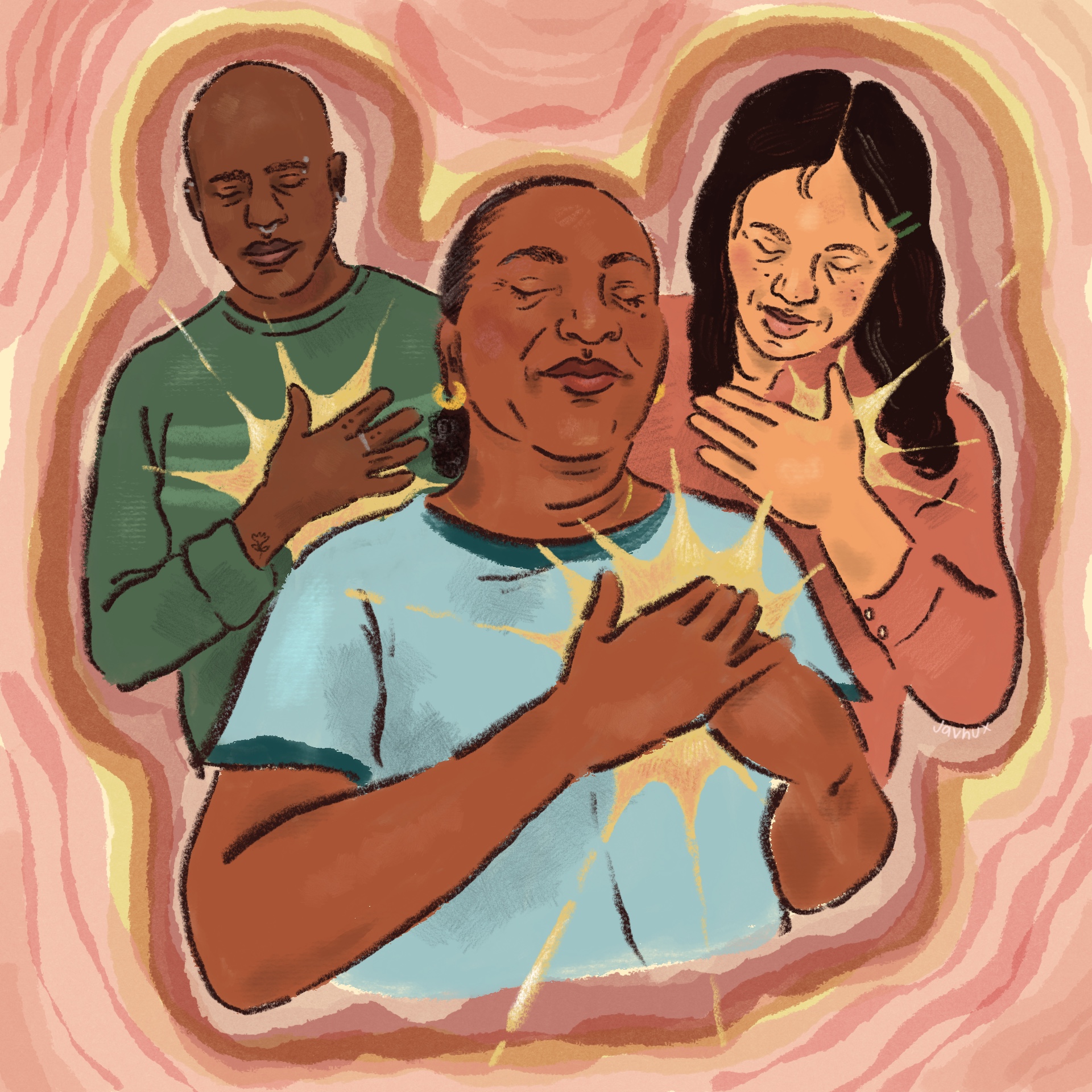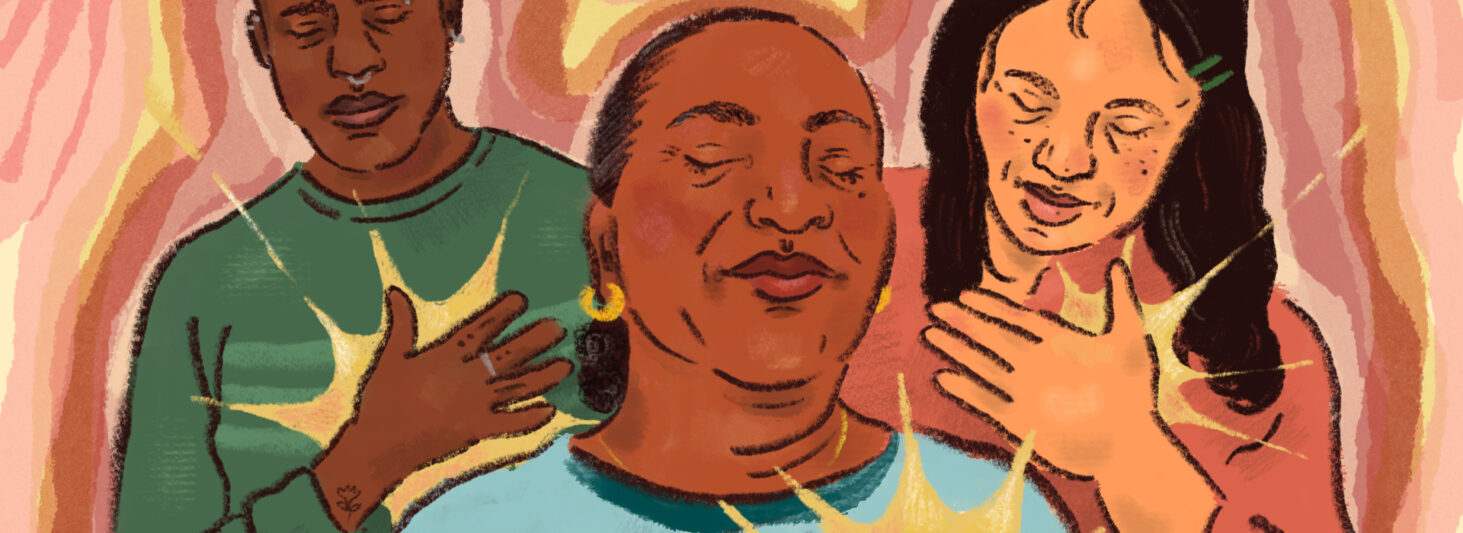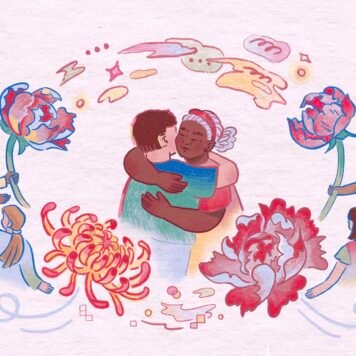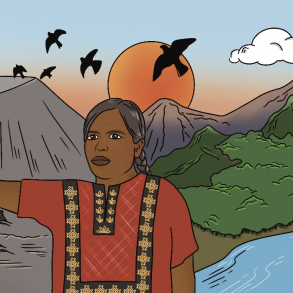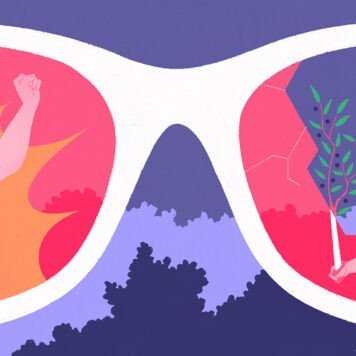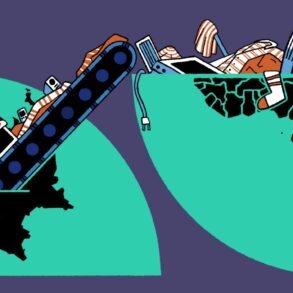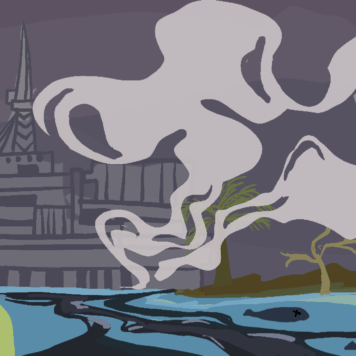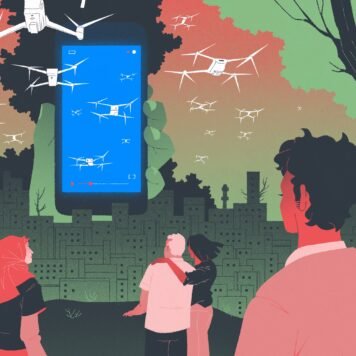The personal is the political is concerned with what is owed to one by society, whereas the political is personal is concerned with what is owed to society by one. – A Sivanandan
I find myself writing this piece amidst collectively trying times, across continents.
Having interviewed Prentis Hemphill some weeks prior, I’m sat under a whirring fan in Jaffna, laptop open in front of me. My attention, though, is on my phone screen. A flurry of Signal messages, arriving simultaneously across several groups: loved ones, comrades and strangers in the UK discussing details of fascist demos and possible marches on local mosques for Jummah.
North-west London, where my parents live, is one of the touted targets. The messages are imbued with a range of emotions – fear, anger, distrust, bravado. They are also simultaneously courageous, people communing to protect one another, drawing on existing movement networks and infrastructures, supplemented by a bolus of spontaneous self-organisation.
Arriving back in London, I speak to Black and brown kin. They tell me this particular surge of state-sanctioned unsafety, like others before it, elicits again the same response – a feeling of constant nervous system activation. Of hypervigilance. Of exhaustion, suspended in perpetual ‘threat’ state.
Yet, this is simply the latest layer of sediment our bodies and nervous systems bear the weight of. Continuing to witness plunder and dehumanisation – the ongoing genocide in Palestine, the imperially-funded war crimes in Sudan, and the neocolonial extractivism in Congo – is another layer still. Add to this the material deprivation engineered by our current plutocracy – nose-diving real-term wages, sky-rocketing rents and upward wealth redistribution – and the result is a lasting effect on our neurobiology and our health as a whole. In short, colonial capitalism is making us sick.
This is the place from which many of us find ourselves necessarily taking political action. But if we dream of revolution, transformation, and freedom for us all, how sturdy are these wounds as the foundations for our new worlds? Can we afford to understand the work of healing ourselves as separate to our collective liberation?
Prentis’s book, and their work more broadly, takes us through how healing through our bodies may unlock the mutually constitutive transformation of ourselves and the world. It’s a stirring call-in to us all to interrogate the relationship between the two – and commit to both.
A cartographer of emotions
On their website, Prentis is described as a cartographer of emotions. In pressing towards a collective liberation, many of our political demands are rightly for the fall of walls, decimation of national borders, the dissolution of that which divides us. Yet, the title of cartographer – one who deals in the contours and borders of things – I think is apt for Prentis. I find they often invite us into sensing our edges, (a feat difficult enough in the disembodying age of neoliberal capitalism), into how these edges meet those of others, and the possibility that lies in this interface, through attending to both our inner and relational worlds.
I’ve followed Prentis’ work for several years now. The texture and nuance in their writing – and speaking – is testament to their time organising politically, working clinically as a psychotherapist, and attending to the details of how their own journey has and continues to shape them.
Reading ‘What It Takes To Heal’, I find myself scribbling in the margins, folding corners, and vigorously underlining. It’s a text that is generous and urgent, and as far as I’m concerned, should be required reading for anyone with even a passing interest in how we change the world.
My conversation with Prentis is a balm. The spotlight is not something they seek – “recluse is not the right word, but that is a path available to me,” they say with a laugh. “I live a really quiet life, I like it like that.” Our time together ambles through everything from calculus to time travel, and at the end, I feel grounded, moved by their wisdom and gentleness.
Below, I want to pick up some themes that touched, or even rearranged me. In doing so, I put Prentis’ work and the broader field of politicised somatics – in the way Prentis speaks to it – into dialogue with issues I’ve been grappling with as an individual, as a doctor working in general practice within the NHS, and in different movement spaces. But before that, I wanted to draw out some important terms that commonly come up both in the book and broader field of knowledge, and lay down some markers for us.
A (very) brief definition of trauma
Trauma is a concept through which more and more people are understanding their experiences – and their body’s responses -– in the world. So what is it? While there are extensive writings on the topic – from the likes of Judith Herman, Resmaa Menakem, Eduardo Duran – Prentis builds on a definition I first read by Staci Haines, a co-founder of generative somatics and one of Prentis’s first teachers in the field of politicised somatics:
“Trauma is an experience, series of experiences, and/or impacts from social conditions, that break or betray our inherent need for safety, belonging, and dignity. They are experiences that result in us having to vie between these inherent needs, often setting one against the other… This is untenable, because all of these needs are constitutive or inherent in us.”
I find this definition propositional: it tells us the conditions that are impossible when trauma is present, and in doing so sets out the core capacities that everyone should have fulfilled to be able to flourish. The ubiquity of trauma is potentially overwhelming. Yet in the book, Prentis invites us to understand trauma as a “teaching tool… [to understand] individual distress and social challenges” – that, through showing us “what is too much for a human body to bear before breaking, what it takes to disarm our defences, which societal structures increase despair,” can guide us towards how we might transform society.
We can understand safety as “freedom from threat.” As Prentis describes, “[w]hen we feel safe, our nervous systems can quiet, allowing for other capacities like imagination and expression to come forward.” Belonging speaks to our sense of relationship to a unit bigger than us – whether a group of friends, a community, a movement.
Critically, “trauma can make belonging contingent or dangerous, leading us to seek isolation or supremacy”, which, as Prentis emphasises, are “both strategies to break belonging.” Dignity is something we all have, without condition through merely existing. In recognising, “witness[ing] and tolerat[ing] dignity in others, we build a foundation for collaboration, for co-creation, and repair.” Crucially, they go on, “the fracturing of these capacities” means “even when our conditions change, we can still struggle internally to feel or believe that these capacities are possible for us.”
In understanding these foundations, we can then appreciate healing in the same terms; in Prentis’s words: “a process, often lifelong, of restoring and reawakening the capacities for safety, dignity and belonging on the other side of trauma”. Critically, as we often know but need to be reminded of, healing is not a fixed destination, but the “ongoing work of enlivening our interiors, waking up our souls.”
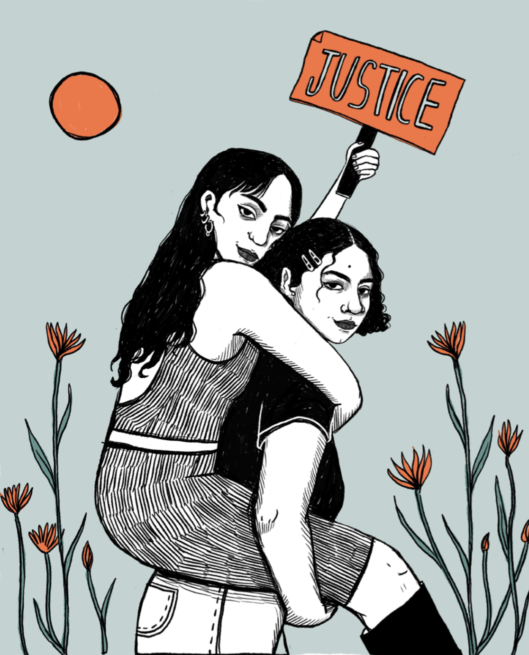
Join our mailing list
Sign up for shado's picks of the week! Dropping in your inbox every Friday, we share news from inside shado + out, plus job listings, event recommendations and actions ✊
Sign up for shado's picks of the week! Dropping in your inbox every Friday, we share news from inside shado + out, plus job listings, event recommendations and actions ✊
What is somatics?
So what does all this have to do with ‘somatics’? And what does ‘somatics’ mean?
Working as a GP puts me face-to-face with our collective disembodiment on a daily basis. In medical school, we are taught in our anatomy and physiology lectures that our nervous systems – composed of a central and peripheral aspect – are one part of the body as a whole. Yet, in this same knowledge system of biomedicine (the hegemonic brand of healing that the NHS deals in, and our doctors are trained in), the thinking and the brain takes precedence over all else.
You only need to look at the nature of therapeutic offerings available through the NHS to see this in play.
‘Behaviour change’ is mooted as a central pillar across the whole healthcare system – from the NHS Long Term Plan to recommendations by the evidence-setting body, NICE, and Public Health England. Almost universally, these decree shifts in patterns of thought, primarily focusing on the unit of the individual (even when delivered in ‘community settings’), overlooking almost totally why we may do the things we do, despite knowing they also have damaging impacts on our health – and what it might take to shift such deeply habitualised patterns.
Within the space of mental healthcare, Cognitive Behavioural Therapy (CBT) is overwhelmingly the most readily available support tool via the NHS. It’s a framework that has specific use cases, but fundamentally focuses on how your thoughts impact your actions, and how you might shift these. Most commonly, this is delivered in off-the-rack, mass-produced packages of Talking Therapies (f.k.a. IAPT) by perennially burnt out mental health workers – a ‘factory of therapy’ that many loved ones and patients have failed to benefit from, and which has been widely critiqued.
Prentis’s words on this in their book are wise: “We’ve been told that once we identify what’s wrong with us, we can fix it, and trade out one behaviour for another. But knowing something alone does not produce changed behaviour, and when we try to impose new ideas on a body that has its own logic and cares, they won’t last…When we rely so heavily on our thinking as the sole basis for healing, we miss the resource, the wisdom, and the reality of our bodies.”
Instead of partitioning thinking and feeling as separate, somatics invites us into an integrated state of being – that is, our ‘soma’, coming from the Greek word for ‘body’. There is a reverence of wholeness in somatics that I’ve observed – that our body, in its wisdom and power is greater than the sum of its parts – and we cannot simply, as Bacon, Descartes, Newton and their whole lineage of successors suggest, deconstruct it to understand its totality.
But what do we mean when we say embodiment? Prentis explains. The first way the term is used is in relation to our capacity to “perceive sensations throughout our bodies” – that is, “the more we can act from both our thinking and our feeling, grounded in our own felt sense, the more we might say that we are embodied.” The other is in reference to learned behaviours, “skills and habits, the ways of being, that live in us,” and which through repetition (conscious or not), we do without having to think through – from “brushing your teeth… to people-pleas[ing]”.
There are several core concepts that Prentis sets out
when outlining embodiment that I find helpful to regularly revisit in these early stages exploring, learning and practising. I recognise many of these from a specific lineage or methodology of somatics called ‘politicised somatics’:
- We are always practising towards something, codifying our responses deeper into our instincts, such that they become second nature – or embodied. Our bodies are wise, and often these are responses we develop to keep us safe. Crucially, however, these embodied responses may or may not align with our values – and so may be either “helpful or harmful to us.”
- Growing our insight into these automatised reactions, “how we do [them], and how [they] came to be,” gives us the chance to change. At its core, somatics is about agency and discernment, providing a framework of understanding and a set of tools to give us more options at any given moment.
- Growing our capacity to feel, instead of refusing it, can create space for our deepest longings to show themselves.
- To transform, we must practise being who we wish to become – so that it becomes easier to reach for that when we are under pressure, instead of reverting by default to our most reactive states.
Racial capitalism, neoliberalism and trauma
Racial capitalism is a central organising principle of our current society. Referring to the mutually constitutive nature of racism and capital accumulation historically and presently, racial capitalism systematically produces conditions that decimate our core capacities for safety, dignity and belonging – that is, trauma. Specifically, it erodes our collective capacities for the above.
The ceaseless march of the prison industrial complex under Starmer’s watch in the UK is the latest facade of a ‘promise’ of public safety predicated on the unsafety of the racialised working class. These communities are relentlessly criminalised – often in their distress – for trying to survive in the conditions of poverty cast on them. Meanwhile, the Grenfell Tower Inquiry (none of it surprising) gave a damning verdict of the kind of safety afforded to the same. Across the pond, the best case scenario is a woman of colour committed to maintaining the “most lethal fighting force in the world,” who rose to prominence driving through policies of mass caging on the West Coast.
To understand our ruptures of belonging, we must first understand the neoclassical – specifically neoliberal – economic project. Here, the individual is the structuring unit – his name is homo economicus, assumed always to be instrumental and self-interested.
Provisions by the state have been suffocated to leave us with a shrivelled social welfare net, replaced instead, as Blakely sets out, by an ‘asset-based welfare’. You must budget prudently in case you become unemployed, you must own your home so you can’t be evicted, you must be able to pay for your own healthcare if you get sick. It is your responsibility, not society’s, because, in Thatcher’s words: “there is no such thing as society.”
And the denial of a universal dignity underpins the dominant mainstream politics of our times. Racial capitalism depends on a hierarchy of people’s worth, on a form of conditional belonging predicated on undermining the dignity of others – from migrants to our trans kin.
But it is specifically the wells of neoliberalism – from which successive British chancellors have unquestioningly drunk – that has irrigated a generation of (neo)fascists, creating a vacuum of belonging fertile for the growth of a populist far-right. From India, where the vice grip of the BJP doggedly holds on, to Indonesia, where Subianto declared himself a ‘fascist dictator’, to El Salvador’s Bukele – this pattern shows no signs of abating in 2024.
All this conspires – in Prentis’s words – to “undermin[e] the very idea of community, conveying the notion that it is too dangerous to be together.”
To heal or to struggle?
So racial capitalism produces trauma that resides in our individual and collective bodies. Neoliberalism cleaves us from our communities and sense of belonging to something shared. And the attendant forces of neo-fascism fundamentally build on ideas of belonging that crush the dignity of all but a select few. The conditions are grim. In such times, there are certain patterns that many of us will recognise from across the left. Many of these have value and exist for a reason – but through considering them more closely, they also help us understand the state of disarray and rupture across the British left.
One key response is a turn towards a politics of identity and lived experience. We – understandably and necessarily – seek spaces where there is no threat to our own story, and that instead celebrate and validate these stories. These are important and valuable sites of sanctuary and rest. Rhetoric in these spaces orients towards ‘healing’, the importance of dealing with our own personal traumas (often through talking therapies), and that ‘rest is resistance’.
Prentis tells me how “we can think that the totality of healing is creating places that are kind of always protective of our particular story or narrative.” These are beautiful and vital in their own right. In some spaces, however, their centre of gravity lies in the individual, their own healing, and affirmation of truths while avoiding all conflict; in bad faith, they can fuel a liberal politics of diversity and representation, rather than liberation.
Another response turns more towards political action, towards speed and urgency. These organisers may say we have no time to speak about how we feel or what has happened to us – the realities are visible on the ground in front of us, and we must transform them. We often speak about mass movements, about ‘building power’. This means door-knocking, phone-banking, community meetings, planning day and night – the bread and butter of movement building, and crucial activities.
And yet, at its worst, I’ve also seen logics of extraction and productivity direct the strategy of certain movements fixated on outcome, fixated on recruitment targets or photo opportunities for example, producing organisations more interested in a transactionality that – as Kelly Hayes and Mariame Kaba wisely tell us – “replicat[e] the oppressive dynamics of capitalism.”
The above dichotomy is something certain social justice movements have been rallying against. Even in the last five years of involvement in such spaces, I have seen the progression of a political analysis that – drawing on schools of feminist politics – places greater emphasis on what our spaces of political organising look like, what they feel like to be in.
There is a call towards a prefiguration of the worlds we want to be in, with a greater recognition of how methodologies of domination show up in our own meetings and activities. Underpinning this is invariably, feminised, racialised reproductive labour – coming at great cost to those involved. One of the consequences, which Prentis speaks to, is something many of us within movement work will have seen repeatedly.
Despite the dreams and best intentions of such orientations, time and time again, when our movements are put under pressure, as Prentis explains: “they can fracture along the lines of individual and collective unaddressed traumas [and] break apart in places where we are replicating patterns that harm others and ourselves.”
To the more militant amongst us, this is inevitable collateral in building impactful, successful organisations and movements – things move in cycles, ruptures happen, and we must simply deal with it. In many senses, I think this is true. And, as someone interested much more in process than outcomes, it feels like this angle obfuscates other important options, different ways of approaching this.
Embodiment as revolutionary practice
So what tools and perspectives may embodiment offer to all this?
I see the above partly as tension between an identitarian orientation to our political analyses, that centres the lived experience of kin subjected to trauma and oppression along varying axes, and a more Marxian material analysis, that considers ‘realities’ rather than experiences.
Marx and Engels do invite us into dialectic materialism – that one’s consciousness of reality and material reality itself are products of one another, constantly in conversation. Yet, oftentimes, my own experience in movement spaces has been that the how of this is glossed over.
I find Prentis’s book, and the broader framework of politicised somatics, provides some waypoints for this.
As Prentis tells me, when “we talk about what it means to take action, this work around healing or embodiment is so important because the quality of connection, the quality of commitment, the quality of vision, is felt.” In contrast to understanding healing as a purely about safety, they speak about healing as engagement, as relationship, and an embodied healing as orienting outwards toward connection.
“Materially,” they continue, “I think there are ways you could break that down, around how we respond to each other, our bodies, and our breath, and our nervous systems.”
I love this idea of focusing on the quality of relations. To me it is the fascia of a movement, what provides tensile strength to the community power we often discuss. Without it, like a tower of cards, we are liable to collapse if the winds of capitalism blow too hard. Embodiment can help dial this strength up. It provides a path to bridge the individual with the collective, to understand the give and take between the two.
I often think that the individual, and in particular the self, as a revolutionary subject, is something we’ve tended to overlook in contemporary movement spaces. Embodiment, and a growing consciousness around politicised somatics, provides a powerful path back towards that. Specifically, I feel Prentis’s book builds on a long line of radical thought and practice connecting the idea of self-transformation with world-transformation, while providing a clear how.
Whether it be Marx on revolutionary consciousness, Fanon on the self as a colonial subject, or the writings of Liu – a Maoist revolutionary – many in the past have tried to cultivate this symbiotic transformation.
Ho Chi Minh drew heavily from Confucian influences to understand revolution as a process of transforming self and society. To engage with the process of how one’s subjectivity is shaped through struggle, and to affect this subjectivity in ways that allow us to struggle, to take political action, must be a core part of how we build our movements.
Creating spaces for this to happen with intention and care, is also critical. The practice of tekmîl in the Kurdish liberation movement is an example, where comrades offer critique and self-critique in service of collective reflection and change, explicitly grounded in the spirit and practice of hevaltî (revolutionary friend-/comradeship).
The prospect of being in collective somatic practice is something that I am moved greatly by. For each of us to attend simultaneously to our whole selves and our collective body – extending also to our non-human kin – seeking not only to develop somatic awareness, but also practising to rearrange and re-shape our individual and collective selves.
Indeed, Prentis draws out protests as a site of collective embodiment. We discuss the power of rituals as a herald for this. Prentis explains: “ritual helps take us out of this moment to say, what are the paths that aren’t laid out, that I haven’t seen, that we could access, through practice?”. This means both retracing rituals old, but also creating new ones. “It’s awkward at first,” they laugh, but speaks to how their ancestors, arriving on the shores of Turtle Island, dispossessed and enslaved through forces of colonisation, made and remade rituals across language and culture.
Crucially, this points to the long lineages of somatic practice that predate this current school of somatics (Prentis discusses this more here). Embodiment need not be dogmatic: dancing, singing and, to me, cooking and eating are all forms of embodiment. All speak to the divine in each of us, what our ancestors have known in their bodies for millenia, and some form of which is practised in homes and, in many cases, places of worship, globally.
Trauma as a theft of time
As we near the end of our conversation, Prentis and I have a beautiful exchange on time.
Personal experiences of the relationship between trauma and time is something that I have listened to many – whether loved ones, comrades or patients – speak to. As others have written, racial capitalism has an extractive function not only in stealing our labour, but in its theft of life force and, ultimately, our time.
Working long hours for poor wages leaves little time for things important to us. Both the poor conditions of this work, and the poor conditions of daily life (housing, nutrition, policing) literally shorten our lives. And, the trauma of racial capitalism gorges on our time further still. It short circuits our ability to presence, to be here and now, instead holding us in reactivity, which Prentis explains to me, “brings the past into this moment or it takes us into the past.”
People often speak of episodes of literal lost time – sometimes referred to as ‘dissociative amnesia.’ It also attacks our muscles of visioning and dreaming, instead freezing us in a myopia, scanning the horizon for threats, something trauma researchers call ‘a foreshortened sense of future’.
This also makes total sense to me as a neurobiological logic produced and then exploited by state and capital. The state’s organised abandonment of working-class communities creates a traumatised population, held in reactivity, arrested in time, that is primed to be extracted from in service of capital. And, Prentis highlights in our conversation, this state of reactivity is precisely one that can be cajoled and tipped into violence, something the far-right have always leveraged to great effect.
Embodiment thaws this – and, Prentis puts it, allows us to move “from the seat of ourselves, [to] come into relationship with one another, and have visions for a more reciprocal and balanced world.”
‘If your intentions aren’t freedom – that’s a risky move’
We close our conversation speaking to the concern of co-option. The language of somatics and embodiment has well and truly entered the mainstream. Many meetings seem to open with a ‘somatic practice’ – even when the content and setting of the meeting itself is antithetical to collective liberation. I’ve seen this in action on more than one occasion myself. I ask Prentis if this is something they are worried about. They respond with a wry, soft smile.
“You know, capitalism is going to do what it’s gonna do. I don’t worry. Especially, because if it gets anybody actually feeling, I think that’s gonna do its own work, even if it’s not as liberatory as I might want it to be. I think so much is designed against our feeling. And if you want to talk about feeling and point people in that direction, I think, you know, if your intentions aren’t more freedom, that’s a risky move.”
This feels an apt note to end on.
Prentis’s book is bold, their prose poetic with equal parts soul and rigour. It is precise, and invites us back into our whole feeling selves, individually and collectively. As the opening quote from Sivanandan tells us, the political is indeed personal, but quite literally – the politics of our world etch themselves into our bones and run through our blood. Without transforming one, we cannot transform the other. ‘
What can you do?
- Listen: Becoming the People – Prentis Hemphill (all the episodes are brilliant, including from the previous series Finding Our Way!)
- Listen: For the Wild – NKEM NDEFO on the Body as Compass
- Watch: Societal Healing and Belonging
- Watch: The Power of Somatics for Collective Transformation – Healing Justice London
- Short read: What is politicised somatics? and Why Somatics for Social Justice and a Transformative Movement?
- Long Read: The Politics of Trauma – Staci K Haines
- Follow: generative somatics
- Follow: Lumos Transformed
- Follow: The Embodiment Institute
- Read: What is Health Justice?
